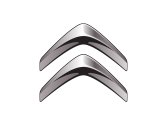Which brand are you looking for?

Abarth
Abarth
Available parts: 2

Bentley
Bentley
Available parts: 2

Bosch
Bosch
Available parts: 1

Cupra
Cupra
Available parts: 5

DS
DS
Available parts: 5

Hummer
Hummer
Available parts: 3

MAN
MAN
Available parts: 1

Maxus
Maxus
Available parts: 4

Mclaren
Mclaren
Available parts: 1

MG
MG
Available parts: 4

Polestar
Polestar
Available parts: 6

Pontiac
Pontiac
Available parts: 1

Proton
Proton
Available parts: 2

Renault Trucks
Renault Trucks
Available parts: 1

Ssangyong
Ssangyong
Available parts: 9

Xpeng
Xpeng
Available parts: 1
engine control unit
What is an engine control unit? (a.k.a. injection computer box)
An electronic control unit (ECU), alternatively called an engine control module, is an electronic car system that controls a combination of sensors to ensure optimal engine performance. Essentially, it functions as the vehicle’s computer by indicating the engine’s performance and drivability. Nowadays, virtually all modern cars are installed with an engine control module.
What does the Engine Control Unit do?
The engine control module (ECM) operates by constantly monitoring a vast network of sensors in the car’s electrical systems to ensure they are operating normally. In case of any dysfunction in operation, the ECM tries to adjust it, and in case it is beyond its control, the ECU sends a trouble code which outputs as a check engine light on the vehicle’s dashboard. Ideally, ECM primarily affects the vehicle’s electronic Fuel Injection by using the throttle position sensor, which gives the basis of its functionality. In essence, the ECM monitors four parts of the vehicle’s performance; air-fuel mixture, ignition timing, variable valve timing, and idle speed. Additionally, the integration of the ECU with the position sensors makes it possible to determine the rotational speed (RPM) of the crankshaft.
Can you replace it yourself?
More often than not, the engine control module will fail to work. In case you experience malfunctioning, the first thing that would cross your mind is whether to take a do-it-yourself approach or seek the services of a specialist. This all depends on the simplicity of replacing one.
You can easily replace an Electric Control Unit (ECU) on your own. The replacement process is quite simple since the ECU is placed on the engine bay, an easy-to-access area. All you need to do is purchase an ECM from autoparts-24.com and get the repair started.
Things to know and remember when replacing the part
To replace the Electronic Control Unit, it is imperative to start by removing the dysfunctional one. The process involved is highlighted below;
Cleaning all contact points and exposed terminals.
Unhooking and resetting the connectors to remove any corrosion.
Evaluate all the connectors are intact and tight.
Using voltage testers ensure the wires do not have intermittent shorts
After removing the damaged Engine Control Unit, the replacement process follows as outlined below,
Step 1: Start by disconnecting the battery using a socket wrench.
Step 2: Locate the electronic control unit. The location of the ECM mostly varies with the model, make and year of manufacture of the vehicle. However, the standard location is the engine compartment or below one of the front seats.
Step 3: Lifting the locking tab to cut the electric supply to the ECM.
Step 4: unscrewing the bolts that hold the old ECM, removing the component
and replacing with the new one.
Step 5: bolt the ECM, plug in the electrical wires and reconnect the battery cables.
Step: Start the engine and allow it to idle for around five minutes.
Also, it is necessary to ensure the replaced Engine Control Unit was pre-programmed before installation. This is critical in updating the necessary software and giving the automobile optimal performance.
Different types/ generations/ models of the part
The Electric Control Unit is a generalized term for the car’s electric system. Types of the engine control module include powertrain control module, transmission control module, brake control module, central control module, a central timing module, body control module, suspension control module, and general electronic module.
Different sub-parts of the Electrical Control Unit (ECU)
At the center of the design of ECU is the core, which is responsible for processing all the signal transmissions. In addition to that, the ECU is embedded with Random Access Memory (RAM) to store the information. The other components include inputs (voltage supply), output such as valves and injectors, communication links, and corresponding software.
Identifying issues or symptoms of failure/problems
The damage to the ECU is inevitable. However, understanding the signs of a damaged ECM makes it easy to find a remedy for the problem. Some of the common symptoms of Elecronic Control Unit (ECU) failure are flashing of the check engine light, poor fuel economy, engine misfiring or stalling, poor engine performance, failure of the engine to start. If you notice such signs, it is fundamental that you figure out the root cause of the malfunction.
Frequently occurring issues with the part (troubleshooting)
Troubleshooting the cause of the ECM malfunction will help prevent subsequent damage to the replaced one. Contextually, some of the common causes of ECM failure are thermal stress, short circuit in the actuator or solenoid circuit, vibration, prolonged exposure of the unit to water cause corrosion which results in dysfunctionality.
On top of this, the other causes of ECM issues are dead batteries, bad jump-starting, low voltage, and bad starters. Essentially, the ECU depends on the voltage from the battery; therefore, the consistent supply of voltage below 6 volts cumulatively leads to the damage of the part. Additionally, bad jump starting can lead to shorting of the ECU electrical cells.
Normal lifetime
Ideally, the ECM is meant to last the lifespan of the vehicle. With the average lifespan of a car being 11 years, the Electronic Control Unit is supposed to have a similar lifetime. However, this might not be the case due to unforeseen circumstances such as extreme heat conditions.
Other parts to replace or fix when replacing the engine control unit (ECU)
In most instances, the Electronic Control Unit malfunction is triggered by another underlying factor. Therefore, to prevent the re-occurrence of the damage, it is necessary to replace other car parts too. The car parts that need replacement are battery, fuel injections, system wiring, ignition switch, fuses of the input and output of the ECU.
How to make sure you purchase the right part for your car
Electronic Control Unit (ECU) has a huge variation depending on the car’s make, model, and year of manufacture. Therefore, you need to find one that is compatible with your vehicle. Notably, replacing an Electronic Control Unit with a new one can be extremely costly. Consequently, it is better to opt for a used one. Even though you going for a used part, it is essential to ensure it is from an Original Equipment Manufacturer (OEM).
By opting for a used OEM ECU, you will be sure that it perfectly fits and integrates with your automobile’s system. The party offers the same quality of performance as the previous one. Additionally, OEMs usually have a warranty cover in case of damage. Therefore, when searching for USED OEM, look no further, autoparts-24.com has got you covered.
Conclusion
The ECM plays an integral part in a vehicle’s optimal functioning. It is responsible for receiving and transmitting signals to all the sensors in the car. When the Electronic Control Unit gets faulty, it disrupts the performance of the engine. However, this can be remedied by replacement with a used OEM electronic control unit.
Spare parts for sale of type by car brands
Our more than 120 car chippers now have more than 15950 pieces of the type for sale on Autoparts24 and here you can see how the used car parts are distributed for each car brand. E.g. you can see that there are 4085 pcs. for sale right now of the VW brand, which is equivalent to 26 % of all used spare parts in the category.
Sold spare parts of the type by car makes
Based on our insight into more than 120 car chippers warehouses, we can see how the sales of spare parts of the type of rearview mirror are distributed among the car brands. E.g. you see that 0 pieces have been sold of the 7232 , which corresponds to 0 % of all used spare parts sold in the category 28
Prices on spare parts of the type
Here you can see how our car chipper sets the price of a spare part with the OEM number . So you have the opportunity to get an impression of the price of a spare part with OEM number , and thus become wiser about which car parts are cheap and expensive respectively. The average price of a spare part with OEM for sale on Autoparts24 is 1365 EUR.
Prices of sold spare parts of the type
Here you can see the price of the spare parts of the type that our car breakers sell. I.e. you can estimate whether most parts are being sold at the cheap end or the expensive end of the scale. Compared to the graph above, showing the offer price of the spare parts, you can evaluate the relationship between supply and demand for the auto spare parts of the type sbr />
The average price of a spare part of the type from one of our car chippers on Autoparts24 is 1177 EUR











































